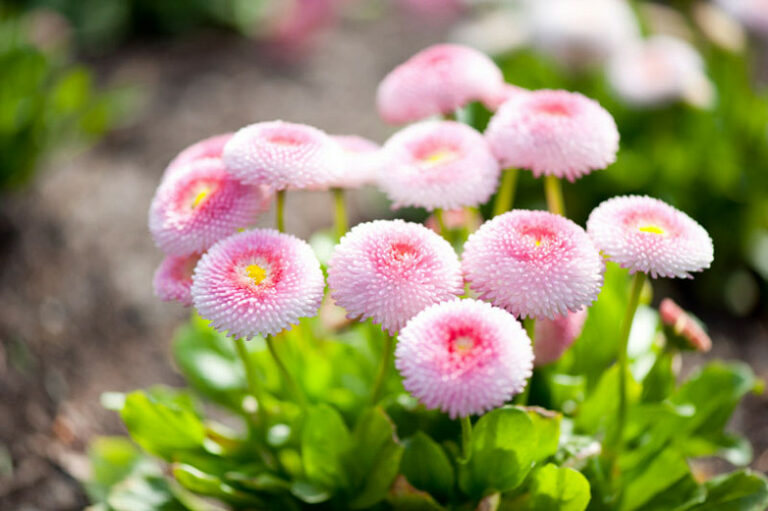For many of us, the English daisy (Bellis perennis) is a true bringer of spring. Even though they are lovely little plants, some gradneres have problems with controlling them. However, they can make wonderful potted companions. Growing and caring for them is very easy, so if you were looking for a decorative plant for your garden, you are in luck.
Most common daisy varieties:
- coneflowers
- gerbera daisies
- Shasta and Bellis daisies
- African daisies
- gloriosa daisies and marguerites
Care
English daisies are very easy to care for (just like pumpkins) and seed themselves, thus you can end up with lots of them, very fast. As mentioned before, controlling their spread can be challenging, so we advice you to grow them in containers. Here are the key things you should also keep in mind:
- Soil: organically rich, loamy soil with acidic, neutral, or alkaline soil pH is what these daisies love. A good drainage is also important, because they do not like to sit in water.
- Water: these plants need regular watering to stay in bloom. When the soil is dry to touch, it is time for watering.
- Light: they need a minimum of 4-6 hours of sunlight every day (full sun to partial shade).
- Temperature: English daisies love cooler temperatures, so if the summer in your area is not particularly hot, you are in luck.
Propagation
In cooler areas, English daisies basically take care of their propagation by spreading their seeds. (Well, actually the wind carries their seeds.) Other than seeds, you can also propagate these plants by division.
- get the fully grown plant out of the ground
- divide the daisy in multiple sections (like you would divide the swiss cheese plant)
- replant the divisions in soil
- keep watering them and you’ll see a new plant in just two weeks
Give it a read

Common Pests
Aphids are the most common pest that destroy English Daisies.
Frequently Asked Questions
It depends on where you plant them. In northern states, they are annuals, while in other areas in the US they bloom only once (bienniels).
Are English daisies weeds?
Some people consider the English daisies noxious weed or unwelcome guests in the garden, while others just simply love them.
How do you keep English daisies from spreading?
Before their flowers produce seeds, discard the entire plant. Or, you can grow these daisies in containers and put them in a secluded place before the seeds appear.
Do daisies like full sun?
They like full sun to partial shade and need a minimum of 4-6 hours of sunlight every day.
